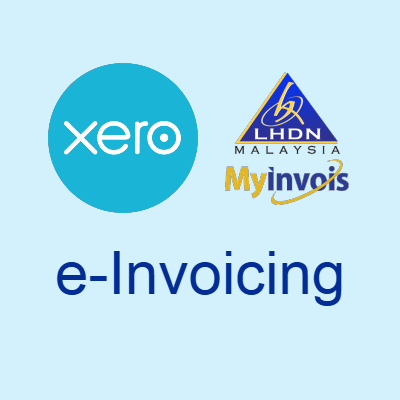This post is also available in:
Bahasa Malaysia
Malaysia’s journey toward full e-Invoicing compliance under the Inland Revenue Board (LHDN) is well underway. With Phases 1–3 completed between 2024 and 2025, the focus now shifts to Phase 4, which begins January 1, 2026. This phase brings the requirement to businesses with annual turnover of RM1 million or more, marking another step toward universal adoption.
For SMEs, particularly those in this upcoming threshold group, Xero offers a reliable, automated, and fully compliant e-Invoicing solution that integrates seamlessly with LHDN’s MyInvois portal.

1. Recap: Malaysia’s E-Invoicing Timeline
The rollout of e-Invoicing in Malaysia has been staggered by turnover size:
|
Phase |
Commencement |
Turnover |
|---|---|---|
|
1 |
Aug 2024 |
Over RM100 million |
|
2 |
Jan 2025 |
RM25 million to RM100 million |
|
3 |
July 2025 |
RM5 million to RM25 million |
|
4 |
Jan 2026 |
RM1 million to RM5 million |
|
5 |
July 2026 |
RM500,000 to RM1 million |
2. What Phase 4 Means for SMEs
Phase 4 will impact a large group of small businesses, many of whom rely on desktop software, spreadsheets, or manual invoicing today. Key requirements include:
- Real-time validation of invoices via MyInvois/Peppol.
- Compliance with the 72-hour submission rule for individual invoices.
- Transition from consolidated e-invoices (allowed during relaxation periods) to individual e-invoices for all transactions.
For SMEs with lean teams, this shift could feel overwhelming—unless supported by the right tools.
3. How Xero Simplifies Phase 4 Compliance
Xero is already integrated with Invoici, a Peppol-certified access point, enabling SMEs to remain compliant with minimal disruption. Key features include:
- Direct MyInvois connection: Xero pushes e-invoices directly to LHDN through Invoici.
- Automatic tracking categories: Ensures every invoice is tagged for correct compliance.
- Seamless transition: Xero handled consolidated submissions for earlier phases and now supports real-time individual e-invoices.
- Cloud convenience: Unlike desktop systems, Xero requires no manual updates or backups—keeping compliance effortless.
4. Steps SMEs Should Take Now
If your business falls into the RM1 million to RM5 million group, here’s how to prepare ahead of January 2026:
- Register on MyInvois Portal and appoint your intermediary.
- Ensure business details in Xero match your MyInvois registration (TIN, BRN, addresses).
- Update customer and supplier data with mandatory tax and registration fields.
- Enable e-Invoicing in Xero and connect to Invoici.
- Train your team on handling validation errors and monitoring submissions.
5. Benefits of Using Xero for E-Invoicing
|
Feature |
Benefit |
|---|---|
|
Automated LHDN compliance |
Reduces errors and ensures alignment with LHDN rules |
|
Cloud-based platform |
No manual software upgrades |
|
Flexible and scalable |
Suitable for micro businesses now, and larger ones as they grow |
|
Time-saving automation |
Consolidates accounting, invoicing, payroll, and compliance |
Malaysia is entering the final stages of e-Invoicing rollout, with Phase 4 in January 2026 being the most critical for SMEs. Businesses that prepare early will avoid last-minute disruptions and benefit from improved efficiency, transparency, and accuracy.
With Xero, SMEs can move forward with confidence, knowing that compliance with LHDN’s e-Invoicing is built into their accounting workflow.
More on Xero
- Expense Management Made Simple with Xero
- Why Xero Works for Small Businesses in Malaysia
- Xero Business Snapshot: Your Financial Dashboard
- Xero Security: Protecting Your Financial Data
- Xero Syft: Smarter Accounting for Malaysian SMEs
- Xero’s Watchlist feature
- Xerocon Brisbane 2025: How Xero’s AI, Analytics, and Smarter Tools are Supercharging Small Businesses